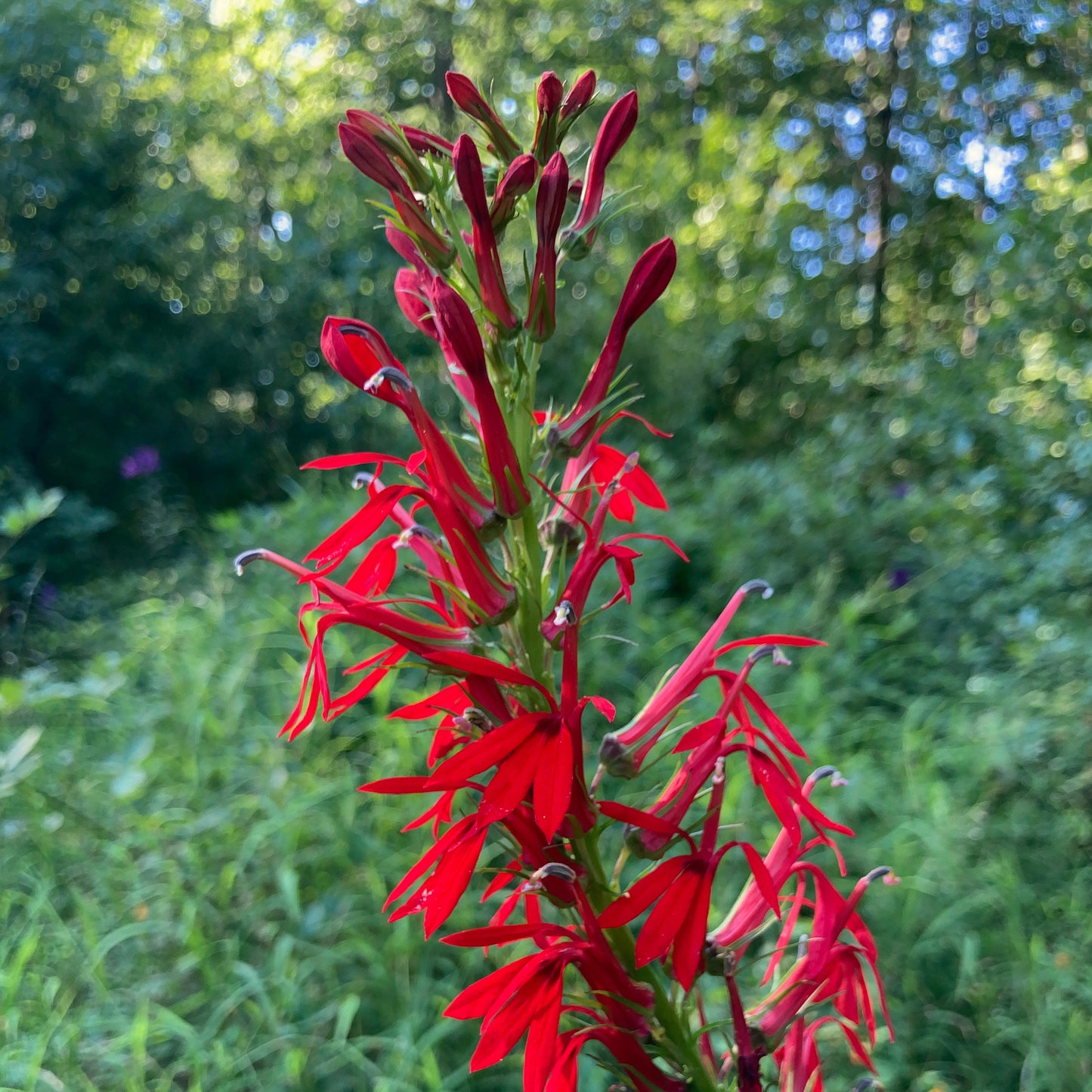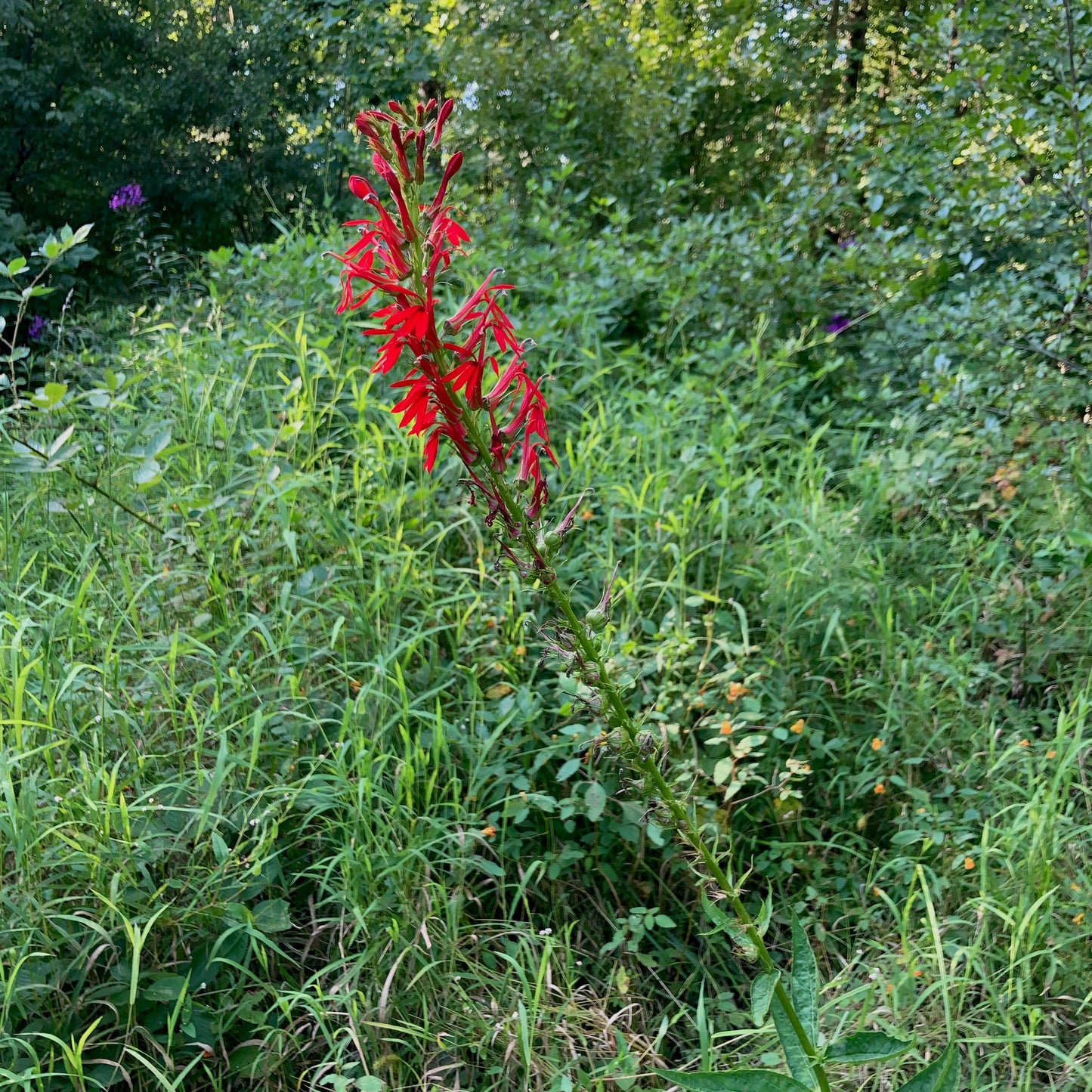Cardinal flower
Lobelia cardinalis
Lobelia cardinalis
88 remaining
Couldn't load pickup availability
Sun/shade: Full sun to part shade
Soil moisture: Medium to wet
Height: 2-4'
Flowering period: August
Deer resistance: Medium
The petals of this bird-pollinated plant flare softly from the stem like a layer of scarlet, gently-ruffled feathers. Although bees are the most important pollinators of plants overall, the primary pollinators of red lobelia are hummingbirds. Indeed, the plant’s searing red coloration – quite unusual among wildflowers – is visible to birds and butterflies but not to bees.
Native to swamps, wet meadows, and openings in wet woods, red lobelia likes consistently moist soil and full sun to partial shade. In the home landscape, red lobelia is a great choice for wet areas, especially the edges of damp shade gardens. Red lobelia can even tolerate temporary flooding, and works well at the edges of ponds and other water features. If grown in average moisture, red lobelia may require regular watering.
Red lobelia is not an aggressive spreader and each plant lives for just a few years. In order to keep red lobelia coming back, allow for some bare soil next to the plant where it can deposit its seeds. The plant pairs very well with blue lobelia, which is similar in growing preferences and life cycle. When planted together, the two plants provide stunning red and blue color during the month of August.
Observing as hummingbirds visit red lobelia reveals the elegant manner in which the flower conforms to the bird’s shape in order to achieve pollen transfer. As the hovering hummingbird inserts its bill into the plant’s long, tubular corolla to obtain nectar, the top of its head brushes against the plant’s anthers and receives a dusting of pollen. If the bird then visits a female-phase red lobelia, its head will brush against the plant’s stigma, transferring some pollen onto it and thereby pollinating the plant. In addition to hummingbirds, swallowtail butterflies show a strong attraction to red lobelia, providing an exquisite sight as they perch to take a nectar drink.
Photos by Julie Slater.





